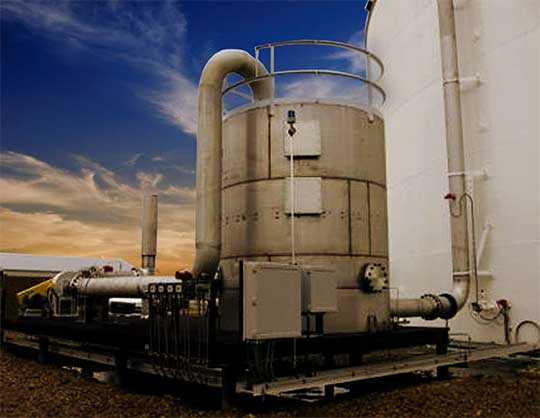
Sulfurous and hydrocarbon odors are an air emission problem common to many industries, including petroleum (refining and transmission), petrochemical, and wastewater treatment, among others. In cases where exhaust gas flow rates and/ or concentrations of contaminants are modest, adsorption is often an excellent choice for emission control technology, achieving up to 99%+ control efficiency at capital and operating costs that are much lower than those for oxidizers.
At one customer location, the customer was having odor complaints from neighbors. The odors were originating from crude oil storage tanks at the site. Vents from the large storage tanks at the site contain both hydrocarbons (VOCs) and sulfurous compounds such as hydrogen sulfide (H2S) and mercaptans. APC Technologies, Inc.’s CarbonPure Series of adsorption systems treats all of the contaminants present – VOCs, H2S, mercaptans (both light and heavy) and other sulfurous compounds, with a single vessel.
VOCs are adsorbed using conventional activated carbon media, and sulfurous compounds are removed using a specialty adsorption media that achieves 99%+ control and has very high loading capacity.
At the site, hydrogen sulfide concentrations are continuously monitored on the inlet and outlet of the APC CarbonPure vessel. Inlet concentration of H2S range from 10 to 40 ppm, and the outlet concentration of H2S is steady at 0.0 ppm. Mercaptans, other gaseous sulfur compounds, and odorous VOCs are also being controlled effectively, with no odor issues at all for the terminal.